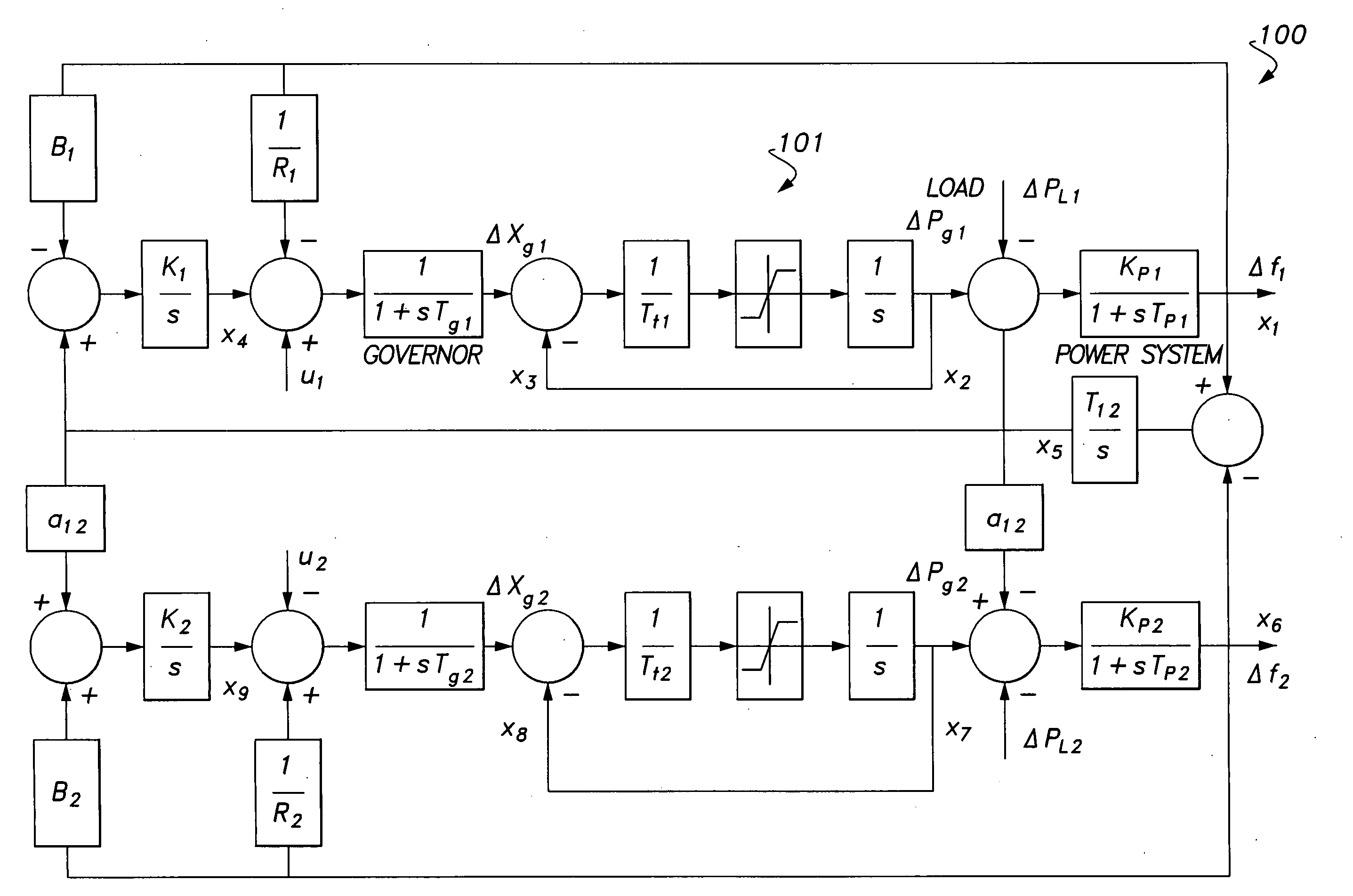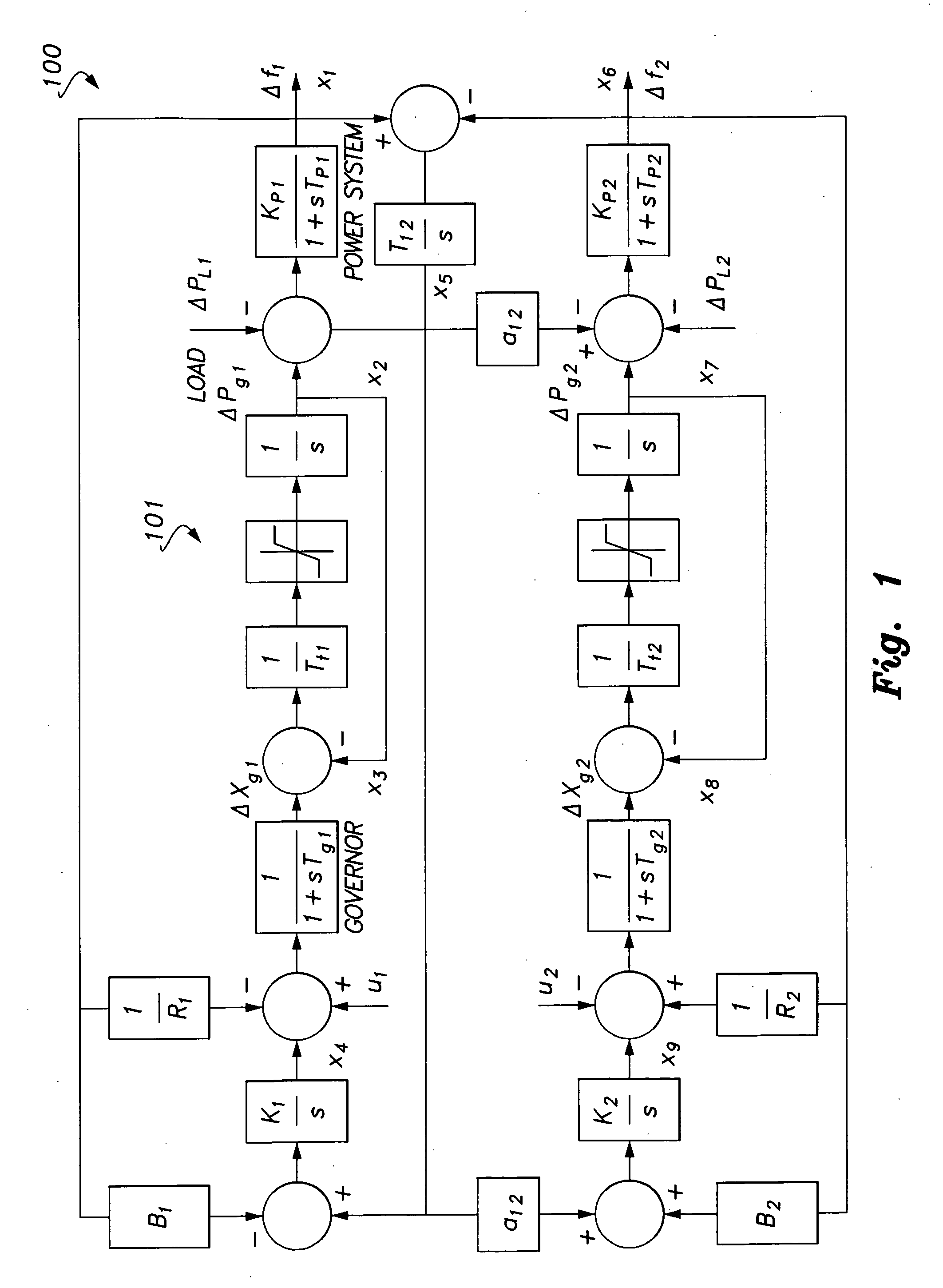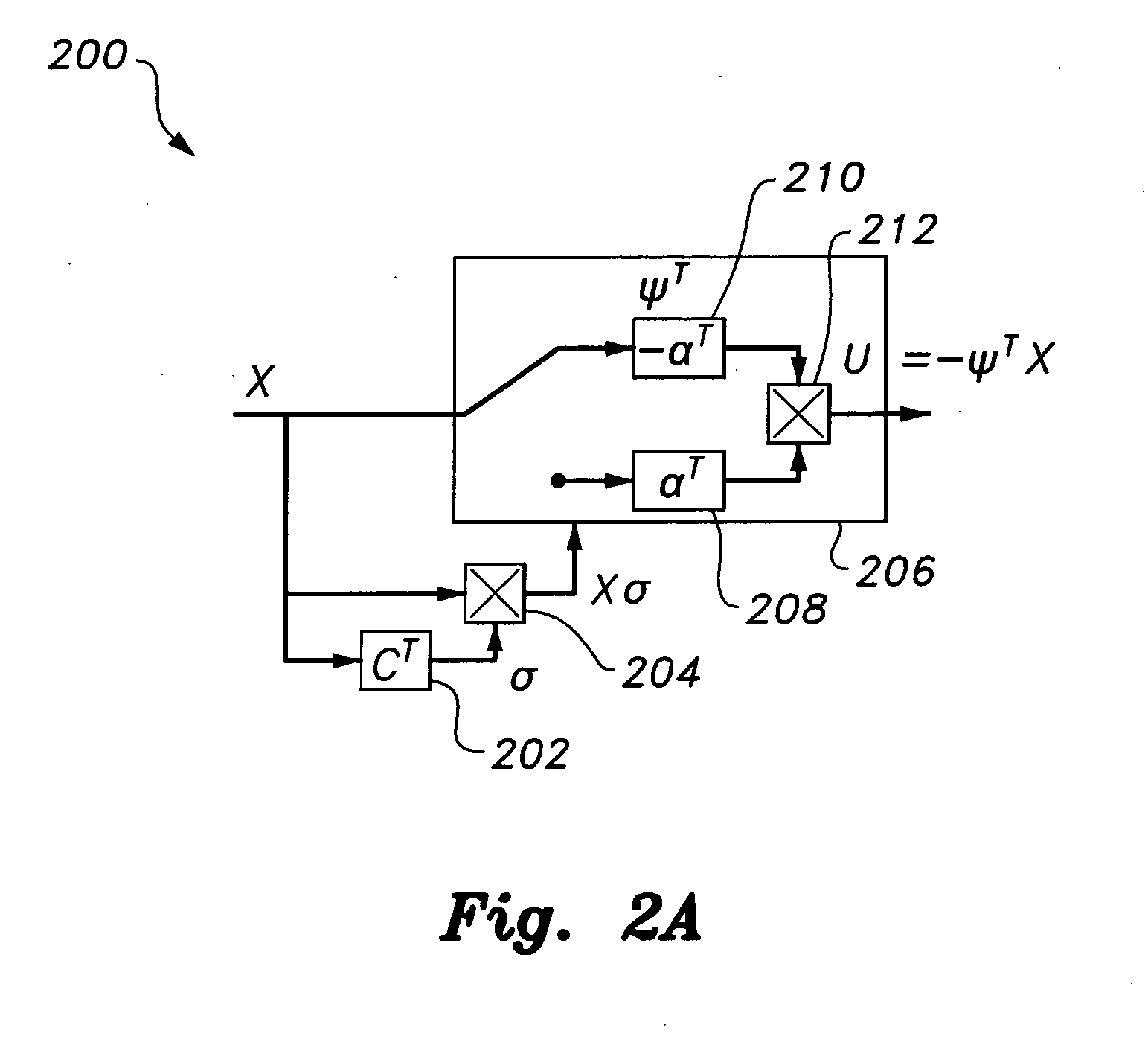Particle swarm optimizing sliding mode controller
- Summary
- Abstract
- Description
- Claims
- Application Information
AI Technical Summary
Benefits of technology
Problems solved by technology
Method used
Image
Examples
Embodiment Construction
[0027]The particle swarm optimizing sliding mode controller provides a system for controlling two non-linearly interconnected power generation systems. As shown in FIG. 1, the interconnected power generation systems 100 may include steam turbine generator subsystems 101, which function as the prime movers for the electrical power generators. The model includes the effect of Generation Rate Constraint (GRC) and limits on the position of the governor valve, which are caused by the mechanical and thermodynamic constraints in practical steam turbine systems. In addition, a limiter on the integral control value is included to prevent excessive control. A typical value of 0.015 per unit / min (p.u. / min) has been included in the model. Tp is the plant model time constant, Tr is the turbine time constant, Tg is the governor time constant, Kp (Hz / p.u. MW) is the plant gain, K is the integral control gain, and R (Hz / p.u. MW) is the speed regulation due to governor action. x2, x3, and x4 are res...
PUM
 Login to view more
Login to view more Abstract
Description
Claims
Application Information
 Login to view more
Login to view more - R&D Engineer
- R&D Manager
- IP Professional
- Industry Leading Data Capabilities
- Powerful AI technology
- Patent DNA Extraction
Browse by: Latest US Patents, China's latest patents, Technical Efficacy Thesaurus, Application Domain, Technology Topic.
© 2024 PatSnap. All rights reserved.Legal|Privacy policy|Modern Slavery Act Transparency Statement|Sitemap



